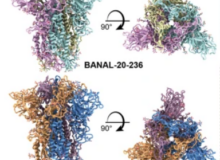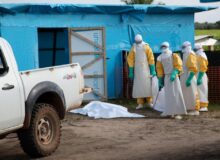Jonathan Latham and Allison Wilson
Concerns over bees, especially the European honey bee (Apis mellifera) have rarely been higher. Although there are few hard data there is a general consensus that both solitary and social bee populations are declining and that recently the still-mysterious colony collapse disorder (CCD) has dramatically worsened this situation. No definitive cause for CCD has yet been established but there is widespread agreement that CCD is caused by more than one factor (Calderone, 2008 ; Oldroyd, 2007).
One of the speculated contributors to this decline is transgenic crops and specifically those containing Bt proteins since these are insect-active toxins to which bees are exposed through various routes. In particular, bee larvae are exposed since they consume large quantities of pollen which bees sometimes source from maize plants (Sabugosa-Madeira et al., 2007). Up to now however there has been no specific evidence that any Bt toxin has negative effects on bees, but equally such studies have been rare. Particularly lacking are studies on sub-lethal effects of Bt toxins on bees.
In the view of many, there is clear evidence from laboratory settings that Bt toxins can affect non-target organisms. Usually, but not always, affected organisms are closely related to intended targets (reviewed in Lovei and Arpaia 2005 and Hilbeck and Schmidt 2006). Typically, exposure is through the consumption of plant parts such as pollen or plant debris or through Bt ingested by their predatory food choices. Nevertheless, due to significant data gaps, the real-world consequences of Bt transgenics remain unclear.
Thus the lepidopteran-active Cry1Ab is, not unexpectedly, toxic to some butterflies (e.g. Losey et al., 1999 and Lang and Vojtech 2006) while more distantly-related organisms affected by Cry1Ab are ladybird larvae, caddisflies and Daphnia Magna (Rosi-Marshall et al., 2007; Bøhn et al., 2008; Schmidt et al 2008). Other variants of Bt, such as Cry3Bb, are considered coleopteran-active but have been the subject of less research. Nevertheless, these may also affect non-target coleopterans such as ladybird larvae as well as more distantly related organisms such as lacewings (Hilbeck and Schmidt 2006; Schmidt et al., 2008).
A recent paper adds to the non-target story by demonstrating that honey bees fed on the active form of purified Cry1Ab protein can be affected in the learning responses necessary to associate nectar sources with odourants (Ramirez-Romero et al., 2008). This learning response is important in bee foraging behaviour and it has attracted the attention of CCD researchers since it is known to be inhibited by the insecticide imidacloprid (e.g. Decourtye et al., 2004). In this latest study bees consuming artificial nectar containing 5000ppb of Cry1Ab continued to respond positively to a learned odour even in the absence of a food reward, while normal bee behaviour is to become discouraged and seek more abundant food sources.
Left unstudied by the authors, however, was the likely mode of action of this behavioural effect. This is of considerable interest since the principal means of Bt lethality, which is thought to be a receptor-mediated effect on gut integrity, fails to explain the observed behavioural modification. The new finding is therefore particularly interesting since it lends weight to a previous suggestion that Bt toxins may have other, non-lethal effects which become apparent only when the normal (i.e. lethal) effect is absent (Hilbeck and Schmidt 2006; Schmidt et al., 2008). If there were to be multiple modes of Bt action then many more non-target organisms would likely be at risk from Bt transgenics.
The authors propose that bees are unlikely to be exposed to the quantity of Cry1Ab that led to the defects in behaviour they observed. However, this conclusion seems premature since Bt concentrations in plants are highly variable (Lorch and Then 2007). It is also probable that in real situations bees may be exposed earlier in their development and over longer periods. Bt Researcher Angelika Hilbeck believes that experiments simulating real-world bee experiences are still lacking. “What really needs to be looked at are combinations of both the Bt toxin AND imidacloprid and not Bt toxin OR imidacloprid, and in a form that simulates the exposure routes in the field”.



